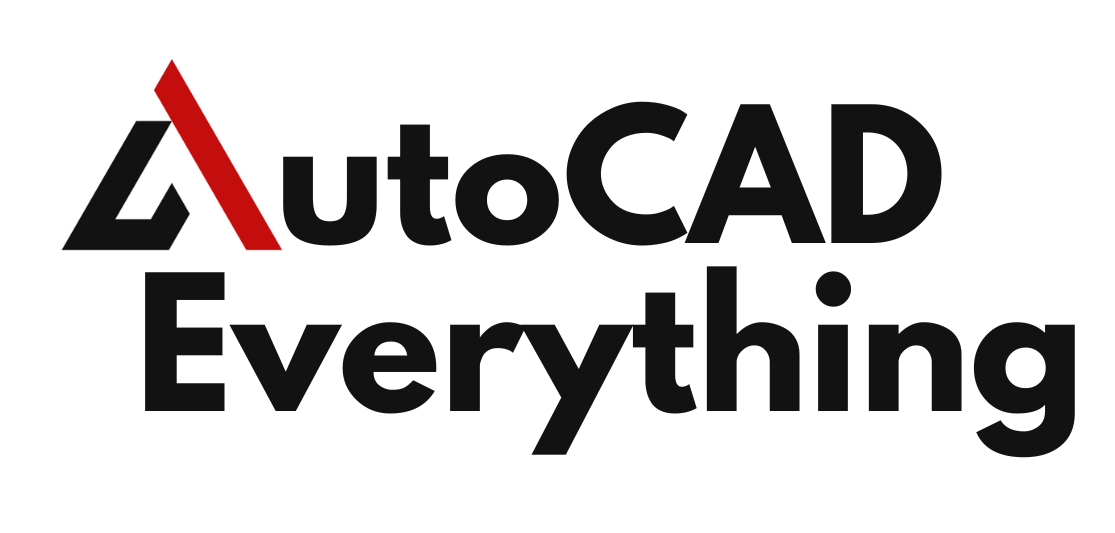Introduction
AutoCAD Array commands are powerful tools that allow users to replicate objects in a pattern, streamlining the design of repetitive elements. Whether you’re designing architectural layouts, mechanical components, or electrical plans, arrays can save significant time and reduce errors by automating duplication. This article provides an overview of AutoCAD’s array types—Rectangular, Polar, and Path—and explores efficient ways to use these commands with shortcuts and best practices for maximum productivity.
Table of Contents
What is an AutoCAD Array ?
In AutoCAD, an array is a command that duplicates objects in a specific pattern. Arrays are commonly used for designing elements like seats in an auditorium, bolts on a circular flange, or fixtures along a path. AutoCAD provides three main array types:
- Rectangular Array: Creates rows and columns in a grid pattern.
- Polar Array: Arranges objects in a circular pattern around a central point.
- Path Array: Distributes objects along a selected path, such as a polyline or arc.

Benefits of Using Array Commands
- Increased Efficiency: Arrays automatically create copies of objects, reducing manual duplication.
- Consistency: Ensures even spacing and alignment, making it easy to maintain uniformity across design elements.
- Enhanced Flexibility: Arrays can be edited dynamically, allowing for quick adjustments without starting over.
- Reduced Errors: By automating repetitive patterns, arrays help eliminate inaccuracies in spacing and placement.
Types of Arrays and When to Use Them
Each array type in AutoCAD serves a specific purpose, suitable for different design needs. Let’s explore each array type, its shortcuts, and when to use it effectively.
1. Rectangular Array (Shortcut: ARRAYRECT)
The Rectangular Array arranges objects in rows and columns, creating a grid pattern.
- When to Use: Ideal for creating repeated elements in a linear grid, like tiles, ceiling lights, or seating arrangements in a room.
- Command Shortcut: Type
ARRAYRECTorARRAYand select Rectangular.
How to Create a Rectangular Array:
- Start the Command: Type
ARRAYRECTorARRAYand select Rectangular. - Select Objects: Choose the objects you want to replicate.
- Specify Rows and Columns: Define the number of rows and columns in the array, along with the spacing between each object.
- Adjust Rows and Columns: Use the Properties palette to change spacing or add more rows and columns.
Pro Tip: After creating a rectangular array, use the Associative option to group the objects. This allows you to edit the entire array as a single object, making future adjustments faster.
2. Polar Array (Shortcut: ARRAYPOLAR)
The Polar Array arranges objects in a circular pattern around a central point.
- When to Use: Ideal for circular designs, such as bolts around a circular flange, spokes in a wheel, or radial seating arrangements.
- Command Shortcut: Type
ARRAYPOLARorARRAYand select Polar.
How to Create a Polar Array:
- Start the Command: Type
ARRAYPOLARorARRAYand select Polar. - Select Objects: Choose the objects to duplicate in a circular arrangement.
- Specify Center Point: Click to select the center point for the rotation.
- Set the Number of Items: Enter the number of copies you need in the array and the total angle (typically 360° for a full circle).
Pro Tip: Use the Rotate Items option to control whether objects rotate along with the circular path. This is useful for aligning objects in the direction of the radial pattern or keeping them oriented uniformly.
3. Path Array (Shortcut: ARRAYPATH)
The Path Array distributes objects along a path, following a curve or polyline.
- When to Use: Perfect for placing objects along non-linear paths, such as streetlights along a road, fence posts, or decorative elements along an arc.
- Command Shortcut: Type
ARRAYPATHorARRAYand select Path.
How to Create a Path Array:
- Start the Command: Type
ARRAYPATHorARRAYand select Path. - Select Objects: Choose the objects to array along the path.
- Select Path: Choose a path object, such as a polyline, arc, or spline.
- Adjust Spacing and Alignment: Use the Properties palette to adjust spacing, distribution method, and orientation along the path.
Pro Tip: The Measure option in a path array allows you to set exact spacing between objects, while the Divide option automatically spaces objects evenly along the length of the path.
Tips for Using Array Shortcuts Effectively
1. Use Dynamic Grips for Quick Adjustments
After creating an array, you can quickly modify it by using the dynamic grips that appear on the array objects.
- Adjust Rows and Columns (Rectangular Array): Click and drag grips to add or remove rows and columns or change spacing.
- Modify Angle and Count (Polar Array): Use grips to adjust the angle and number of items in the array.
- Edit Path and Spacing (Path Array): Use grips to adjust the spacing along the path and refine the curve’s alignment.
Pro Tip: Dynamic grips are ideal for making quick adjustments without needing to access the Properties palette, saving time in complex layouts.
2. Switch Between Static and Associative Arrays
By default, arrays in AutoCAD are associative, meaning they are grouped as a single object that you can edit collectively. However, you may sometimes want to work with non-associative arrays, especially for unique or irregular designs.
- Make an Array Non-Associative: Select the array, go to the Properties palette, and turn off Associative.
- Explode the Array: For complete control over each element, type
EXPLODEand select the array. This breaks the array into individual components.
Pro Tip: Use associative arrays for simple repetition, where quick modifications are needed, and switch to non-associative arrays when designing elements that require individual adjustments.
3. Use Multiple Arrays for Complex Patterns
For intricate designs, you may need multiple arrays layered together. You can use different array types to create more complex patterns.
- Example: Use a rectangular array to create rows, then add a path array to place unique elements along a curved section of the layout.
- Layering Arrays: Combine array types for unique visual effects, such as mixing radial bolts with linear elements in mechanical designs.
Pro Tip: Make use of layers to organize and control the visibility of multiple arrays within the same drawing, keeping complex designs clear and manageable.
4. Apply Constraints with Array Shortcuts
Constraints help maintain specific relationships between arrayed objects, especially when resizing or moving the array.
- Apply Constraints: Use the PARAMETER command to set up dimensional constraints for rows, spacing, or angles.
- Maintain Uniformity: With constraints, changes to one part of the array will automatically adjust the rest, keeping proportions consistent.
Pro Tip: Constraints work well in repetitive layouts that need consistent adjustments, like seating arrangements or modular components.
Best Practices for Using Array Commands in AutoCAD
- Save Time with Presets: Once you create an array that you frequently use, save it as a block. This allows you to quickly insert predefined arrays into future drawings.
- Use Layer Management: When working with multiple arrays, place each array on a separate layer to control visibility and make editing easier.
- Set Up Object Snap and Grid Settings: Ensure that Object Snap (Osnap) and grid settings align with your array’s layout. This will help you position the array more accurately.
- Leverage Arrays in 3D Models: Arrays work well for 3D components, allowing you to repeat objects along different axes, such as copying pillars along a grid in architectural models.
- Preview the Array Layout: Before confirming an array, preview it to ensure that spacing and orientation are correct. This can help you avoid complex edits afterward.
Conclusion
Mastering AutoCAD’s array shortcuts can significantly boost your productivity, especially when working with repetitive design elements. By using Rectangular, Polar, and Path arrays effectively, you can automate the placement of components, maintain consistent alignment, and make your workflow more efficient. Whether you’re an architect, engineer, or designer, these array commands allow you to focus on creativity while handling repetitive tasks with ease. With the tips and techniques provided, you’ll be able to leverage arrays for precise, streamlined designs that save time and improve accuracy.
FAQs
- What is an array in AutoCAD?
An array in AutoCAD is a command that duplicates objects in specific patterns—Rectangular, Polar, or Path—based on specified parameters, used to create repeated elements efficiently. - How do I create a polar array in AutoCAD?
Use theARRAYPOLARcommand, select the objects to duplicate, specify a center point, and enter the number of copies and angle for circular patterns. - What’s the difference between associative and non-associative arrays?
Associative arrays are grouped as a single object, allowing for easy modifications, while non-associative arrays are separate objects that can be edited individually. - Can I adjust an array after creating it?
Yes, use dynamic grips to adjust rows, columns, spacing, angles, and paths, or modify settings in the Properties palette. - How do I create an array along a curved path?
Use theARRAYPATHcommand, select the object to duplicate, and choose a curved path like a polyline or arc. Adjust spacing along the path for custom layouts.

